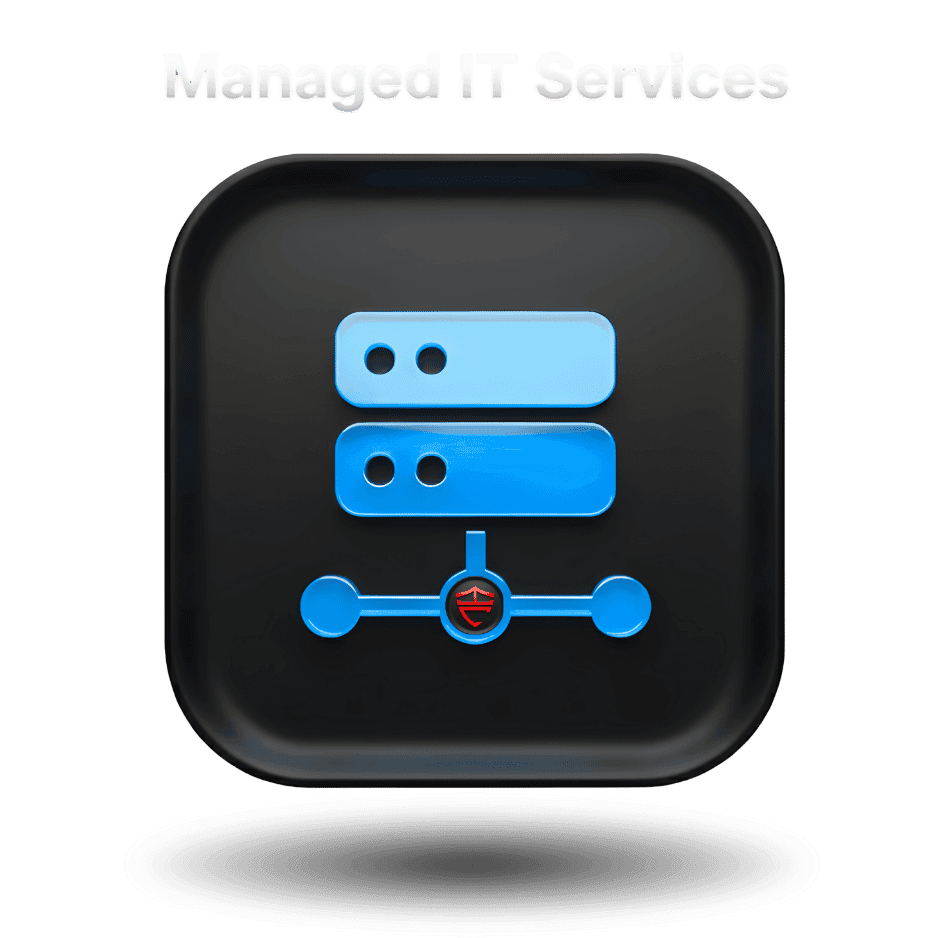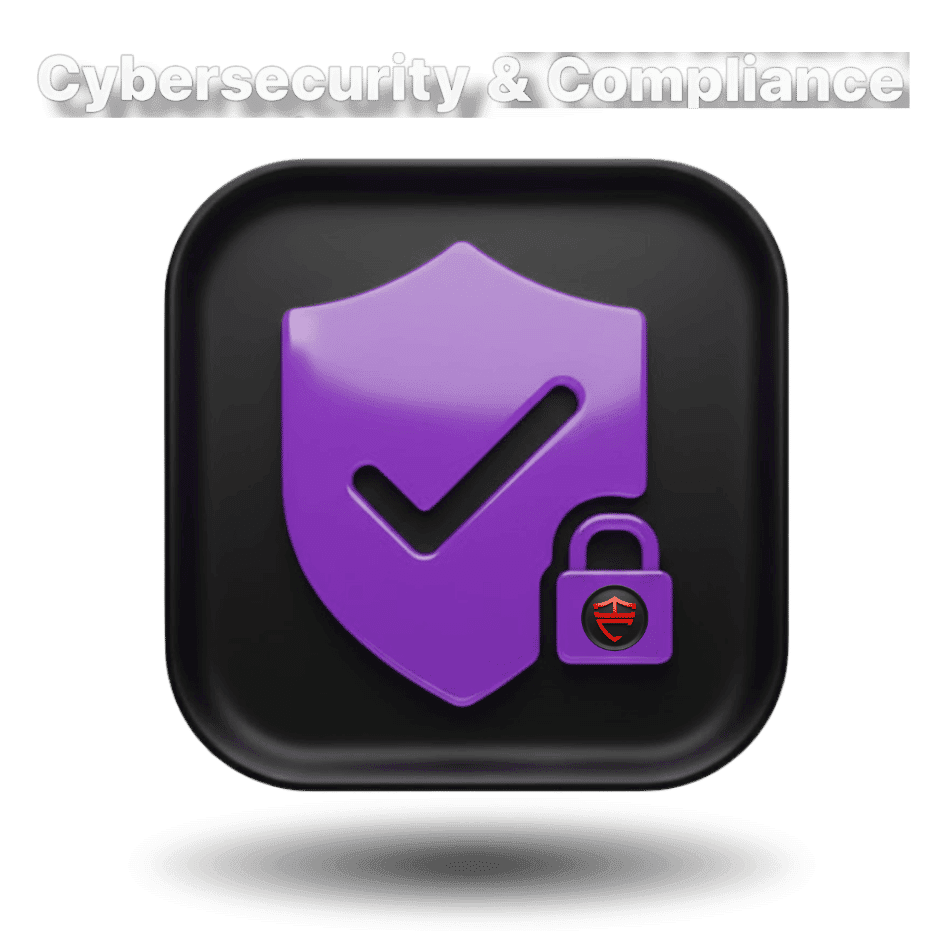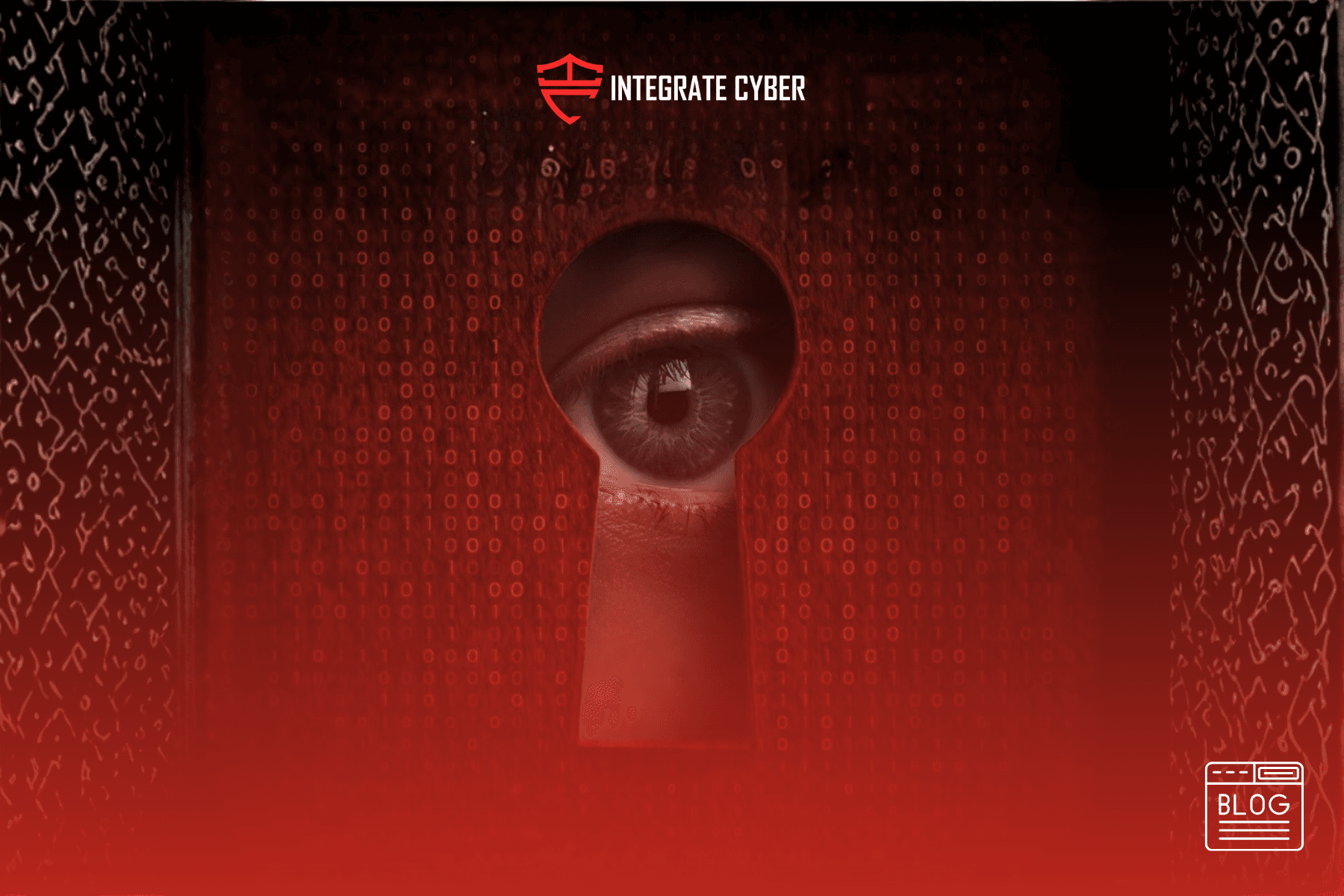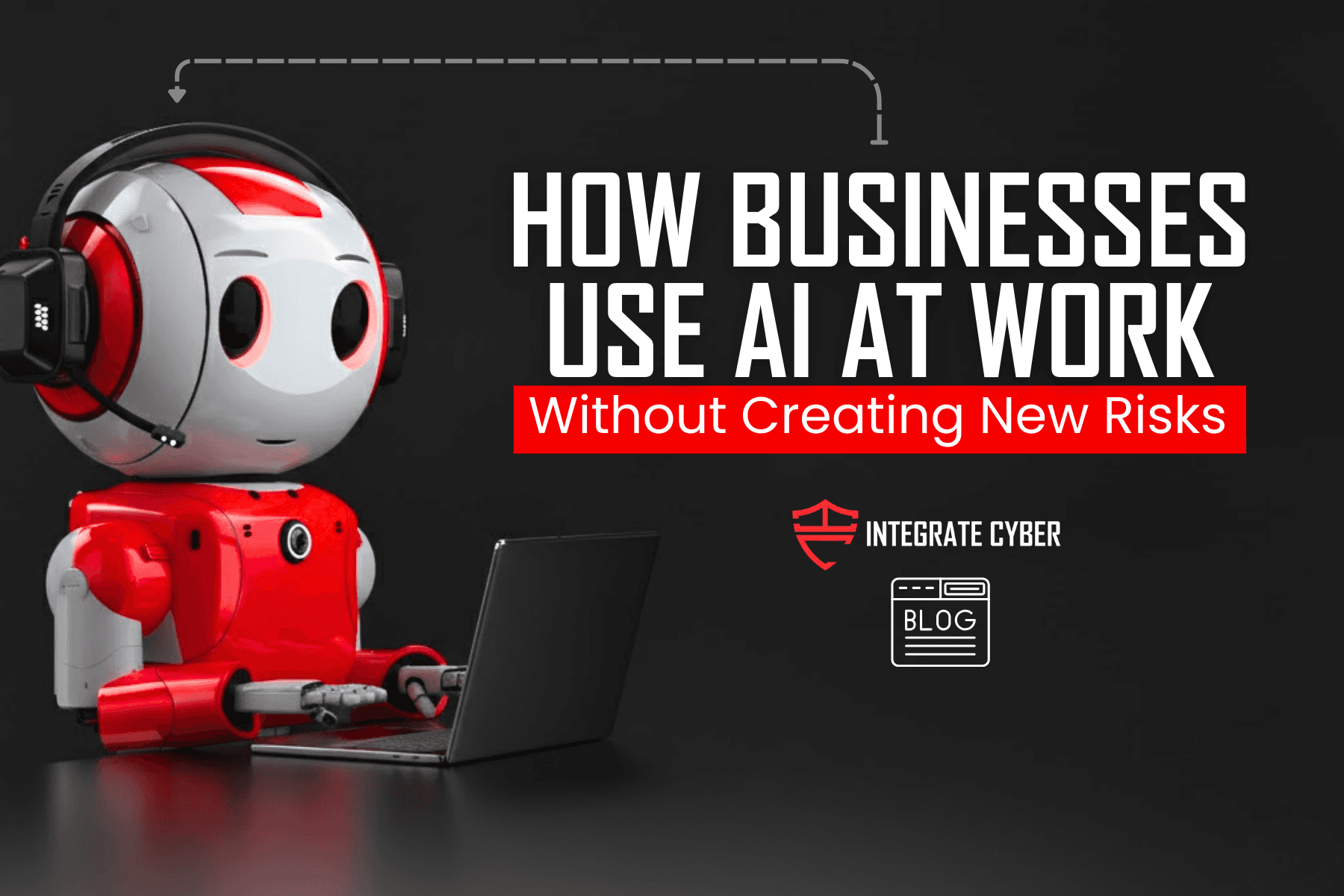Cybersecurity & Technology Built for Growing Businesses
Cybersecurity & Technology Built for Growing Businesses
For businesses recovering from incidents, or working hard to avoid one. Managed IT support, proactive security, and strategic guidance to keep you stable, protected, and confident moving forward.



5/5 (from verified clients)
Trusted by worldwide partners and customers








Trusted by worldwide partners and customers








Protection That Supports Your Growth
Big or small, every business feels the pressure, limited time, growing risks, and technology that never stops evolving. We deliver enterprise-level protection and managed IT clarity that supports your pace and keeps your team moving confidently.




Enterprise-Grade Security & IT Services Built for SMBs
Enterprise-Grade Security & IT Services Built for SMBs
Integrate Cyber delivers Managed IT, Penetration Testing, and Compliance support—giving growing businesses access to the same protection and expertise as larger enterprises.
Integrate Cyber delivers Managed IT, Penetration Testing, and Compliance support—giving growing businesses access to the same protection and expertise as larger enterprises.
0+
0+
0+
0+
SMBs Secured
SMBs Secured
0+
0+
0+
0+
Threats Neutralized
Threats Neutralized
0%
0%
0%
0%
Client Satisfaction
Client Satisfaction
0+
0+
0+
0+
Audits Passed
Audits Passed








Certifications That Set Us Apart
Certifications That Set Us Apart


Your Trusted Partner in Cybersecurity Excellence
Your Trusted Partner in Cybersecurity Excellence
Security shouldn’t feel confusing or overwhelming. We bring clarity, protection, and proactive support to help businesses recover from setbacks, prevent future issues, and stay confidently secure with technology that’s finally handled.
Security shouldn’t feel confusing or overwhelming. We bring clarity, protection, and proactive support to help businesses recover from setbacks, prevent future issues, and stay confidently secure with technology that’s finally handled.













Top-Rated IT Partner for Growing Businesses






Top-Rated IT Partner for Growing Businesses






Top-Rated IT Partner for Growing Businesses






Success Stories From Businesses We’ve Helped Protect
Our clients didn’t just secure their systems, they regained stability, clarity, and peace of mind. Discover how growing SMBs strengthened their defenses, achieved compliance, and created a safer future with our support.
We decided to give Integrate Cyber a try after dealing with outdated networking and support. They have been timely, thorough and efficient at getting our network and computer systems back up to speed. They go above and beyond in recommendations to save money and apply the best options for your budget.
Nick H.
Retail & eCommerce
"We couldn't be happier with the service level delivered by the Integrate Cyber team. They are staying ahead of IT issues and notify us instead of them. They take care of all our technology needs and do a great job of educating us through the processes and our needs."
Steve S.
Construction
Working with Integrate Cyber has really benefited our business. Their team is attentive to our needs and are responsive & proactive. They have implemented new security features that have made our business feel safe in its day-to-day operations. We highly recommend Integrate Cyber!
Antonia B.
Construction

Success Stories From Businesses We’ve Helped Protect
Our clients didn’t just secure their systems, they regained stability, clarity, and peace of mind. Discover how growing SMBs strengthened their defenses, achieved compliance, and created a safer future with our support.
We decided to give Integrate Cyber a try after dealing with outdated networking and support. They have been timely, thorough and efficient at getting our network and computer systems back up to speed. They go above and beyond in recommendations to save money and apply the best options for your budget.
Nick H.
Retail & eCommerce
"We couldn't be happier with the service level delivered by the Integrate Cyber team. They are staying ahead of IT issues and notify us instead of them. They take care of all our technology needs and do a great job of educating us through the processes and our needs."
Steve S.
Construction
Working with Integrate Cyber has really benefited our business. Their team is attentive to our needs and are responsive & proactive. They have implemented new security features that have made our business feel safe in its day-to-day operations. We highly recommend Integrate Cyber!
Antonia B.
Construction

Success Stories From Businesses We’ve Helped Protect
Our clients didn’t just secure their systems, they regained stability, clarity, and peace of mind. Discover how growing SMBs strengthened their defenses, achieved compliance, and created a safer future with our support.
Integrate Cyber has been fantastic - They are very knowledgeable, communicate well, are fairly priced, and are very responsive! I highly recommend Integrate to other business owners. You will have peace of mind and will be in great hands.
Nigel P.
Telecommunications
"We couldn't be happier with the service level delivered by the Integrate Cyber team. They are staying ahead of IT issues and notify us instead of them. They take care of all our technology needs and do a great job of educating us through the processes and our needs."
Steve S.
Construction
We decided to give Integrate Cyber a try after dealing with outdated networking and support. They have been timely, thorough and efficient at getting our network and computer systems back up to speed. They go above and beyond in recommendations to save money and apply the best options for your budget.
Nick H.
Retail
Working with Integrate Cyber has really benefited our business. Their team is attentive to our needs and are responsive & proactive. They have implemented new security features that have made our business feel safe in its day-to-day operations. We highly recommend Integrate Cyber!
Antonia B.
Construction

Success Stories From Businesses We’ve Helped Protect
Our clients didn’t just secure their systems, they regained stability, clarity, and peace of mind. Discover how growing SMBs strengthened their defenses, achieved compliance, and created a safer future with our support.
Integrate Cyber has been fantastic - They are very knowledgeable, communicate well, are fairly priced, and are very responsive! I highly recommend Integrate to other business owners. You will have peace of mind and will be in great hands.
Nigel P.
Telecommunications
"We couldn't be happier with the service level delivered by the Integrate Cyber team. They are staying ahead of IT issues and notify us instead of them. They take care of all our technology needs and do a great job of educating us through the processes and our needs."
Steve S.
Construction
We decided to give Integrate Cyber a try after dealing with outdated networking and support. They have been timely, thorough and efficient at getting our network and computer systems back up to speed. They go above and beyond in recommendations to save money and apply the best options for your budget.
Nick H.
Retail
Working with Integrate Cyber has really benefited our business. Their team is attentive to our needs and are responsive & proactive. They have implemented new security features that have made our business feel safe in its day-to-day operations. We highly recommend Integrate Cyber!
Antonia B.
Construction
Getting Started with Integrate Cyber is Easy
Book a Free Discovery Call
A quick 15-minute conversation to understand your IT and security needs—and confirm we’re the right fit for your business.
Get a Custom Strategy
We’ll create a tailored IT and cybersecurity plan aligned with your goals, risks, compliance needs, and growth roadmap.
Secure and Scale
We’ll execute your strategy, fortify your systems, and support your team so you can focus on growing the business, not managing technology.





Always On. Always Secure.
Always On. Always Secure.
IT that watches over your business… even when you’re not.
Continuous monitoring, rapid support, and proactive defence for teams who can’t afford disruption.
IT that watches over your business… even when you’re not.
Continuous monitoring, rapid support, and proactive defence for teams who can’t afford disruption.
What’s Included:
• 24/7 monitoring & threat detection
• Remote IT support + helpdesk
• Patch management & updates
• Endpoint & device protection
• Network optimisation + backups
What’s Included:
• 24/7 monitoring & threat detection
• Remote IT support + helpdesk
• Patch management & updates
• Endpoint & device protection
• Network optimisation + backups


Expose Weaknesses.
Strengthen Defences.
Expose Weaknesses.
Strengthen Defences.
Real-world attack simulations that reveal vulnerabilities and harden your security posture.
Real-world attack simulations that reveal vulnerabilities and harden your security posture.
What’s Included:
• Full external & internal vulnerability assessment
• Manual exploitation & attack simulation
• Web application testing
• Network & endpoint security testing
• Detailed risk report + remediation guidance
What’s Included:
• Full external & internal vulnerability assessment
• Manual exploitation & attack simulation
• Web application testing
• Network & endpoint security testing
• Detailed risk report + remediation guidance








Compliant Today.
Confident Tomorrow.
Compliant Today.
Confident Tomorrow.
HIPAA, GDPR, and industry-standard alignment with policies, controls, and documentation handled for you.
HIPAA, GDPR, and industry-standard alignment with policies, controls, and documentation handled for you.
What’s Included:
• Compliance gap assessment
• Policy & procedure development
• Security controls implementation
• Staff awareness & training support
• Audit preparation + documentation
What’s Included:
• Compliance gap assessment
• Policy & procedure development
• Security controls implementation
• Staff awareness & training support
• Audit preparation + documentation


FREE E-BOOK
A practical guide to help small and midsized businesses stay resilient, recover faster, and keep operations running…no matter what challenges arise.


FREE E-BOOK
A practical guide to help small and midsized businesses stay resilient, recover faster, and keep operations running…no matter what challenges arise.


FREE E-BOOK
A practical guide to help small and midsized businesses stay resilient, recover faster, and keep operations running…no matter what challenges arise.

Frequently Asked Questions
What makes Integrate Cyber different from other cybersecurity providers?
Most cybersecurity providers lead with tools. We lead with clarity. Integrate Cyber helps business owners understand what actually matters in their environment, in plain language, before adding complexity or cost. We connect security decisions to real business operations, reduce noise instead of creating more dashboards, and focus on preparation and consistent habits rather than reactive fixes. As your business grows, security shouldn’t feel louder…it should feel calmer.
Do you offer customized pricing for each client?
Test
What industries do you specialize in?
Test
What’s included in your Managed IT Services?
Test
Is Penetration Testing really necessary for SMBs?
Test

Frequently Asked Questions
What makes Integrate Cyber different from other cybersecurity providers?
Most cybersecurity providers lead with tools. We lead with clarity. Integrate Cyber helps business owners understand what actually matters in their environment, in plain language, before adding complexity or cost. We connect security decisions to real business operations, reduce noise instead of creating more dashboards, and focus on preparation and consistent habits rather than reactive fixes. As your business grows, security shouldn’t feel louder…it should feel calmer.
Do you offer customized pricing for each client?
Test
What industries do you specialize in?
Test
What’s included in your Managed IT Services?
Test
Is Penetration Testing really necessary for SMBs?
Test

Frequently Asked Questions
What makes Integrate Cyber different from other cybersecurity providers?
Test
Do you offer customized pricing for each client?
Test
What industries do you specialize in?
Test
What’s included in your Managed IT Services?
Test
Is Penetration Testing really necessary for SMBs?
Test

Get Expert IT Support That Protects Your Business
Minimize downtime, boost productivity, and secure your systems with fully managed IT built for SMBs.

Get Expert IT Support That Protects Your Business
Minimize downtime, boost productivity, and secure your systems with fully managed IT built for SMBs.

Get Expert IT Support That Protects Your Business
Minimize downtime, boost productivity, and secure your systems with fully managed IT built for SMBs.




Subscribe To Our Weekly Newsletter
Weekly insights that help you understand risks, improve protection, and make smarter technology decisions.

Subscribe To Our Weekly Newsletter
Weekly insights that help you understand risks, improve protection, and make smarter technology decisions.

Subscribe To Our Weekly Newsletter
Weekly insights that help you understand risks, improve protection, and make smarter technology decisions.


Insights That Secure Your Growth
Stay ahead of evolving threats, industry trends, and compliance updates. Our expert-driven blog delivers practical advice and timely insights to help SMBs make smarter, more secure decisions.
INTEGRATE CYBER
Other
Follow Us
© 2025 Integrate Cyber. All Right Reserved.
INTEGRATE CYBER
Other
Follow Us
© 2025 Integrate Cyber. All Right Reserved.
INTEGRATE CYBER
Other
Follow Us
© 2025 Integrate Cyber. All Right Reserved.









